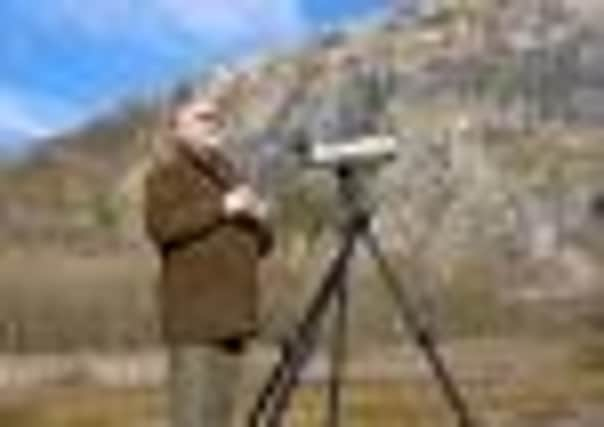On raven watch in the Dales


We heard our pair of ravens a good minute before they were spotted high up in the sky. Their deep, barking ‘pruk, pruk’ reverberated across the wide dale, and our binoculars hunted for them until two ragged black birds were located against grey cloud.
As they came closer, we could make out their distinct diamond-shaped tails and saw what looked like white ping-pong balls in their very large, brutal beaks. Nearer still, however, it was clear that these were balls of white wool, which they had gathered to line their nest.
Advertisement
Hide AdAdvertisement
Hide AdThis was no lucky encounter with ravens. Doug Simpson, a member of the Yorkshire Dales Upland Birds Study Group, was staking out a crag on which the birds have bred for the last few years. It is one of a dozen or so nesting sites in the Yorkshire Dales, all of them a closely guarded secret because of persecution, even though the bird – Britain’s largest crow – feeds mainly on the carcasses of dead rabbits and sheep. In rural areas, old habits and prejudices die hard.
The raven is known in some parts of northern England as the “croupy craw”. In country lore, it has long been regarded as a harbinger of doom, and just hearing croak was considered a bad omen.
We watched the ravens descend to a large heap of sticks built precariously on the ledge of a limestone scar and then, almost at once, take off again. They retraced their flight line back across the dale, but this time paused for a few moments to indulge in their famous aerobatics display, thought to be part of courtship ritual. After a few more croaks, they then disappeared into the murk.
Ravens are one of the few species of birds in Britain to lay eggs in February, sometimes as many as six or seven, but on this cold, grey day it was clear that the old nest was still being repaired after winter’s ravages.
Advertisement
Hide AdAdvertisement
Hide AdDoug will make frequent revisits through the late winter and spring, setting up his telescope to confirm that the hen bird is sitting on eggs, and watching for “the heads of the young to bob up from the pile of sticks, so that I can count them”.
We then drove about 20 miles to an even remoter and less-visited part of the Dales, where the landscape hasn’t changed for centuries and ravens have bred almost continuously on a spectacular but rarely visited limestone cliff.
Within seconds of leaving the car, we heard their unmistakable calls. But the cloud was lower here, and the ravens themselves were nowhere to be seen.
In Yorkshire, that other great crag-dweller, the peregrine falcon, has made a spectacular recovery over the last 100 years. But time has not been so kind to the raven which was once widespread across all three Ridings. Today, the bird has staged a minor recovery, although it is something of a mystery why some historically recorded nesting sites remain abandoned while other apparently less suitable crags – where the birds are vulnerable to disturbance or worse – have become occupied. It has a foothold in the South Pennines and is thought to be increasing to the west of Sheffield.
Advertisement
Hide AdAdvertisement
Hide AdRavens can, and do, pop up in lowland areas but they are almost always non-nesting birds. They don’t achieve breeding condition until they are four or five years old.
The main threat to the bird is the use of poisoned baits left out for foxes and vermin, while some birds are killed deliberately. It has only basic legal protection, and is not a Schedule 1 bird like a peregrine.
A couple of years ago, a nesting attempt on a railway viaduct in Dentdale failed when one bird was found to have been shot.
Another problem is that farmers are now required to quickly remove any dead livestock and dispose of their carcasses safely, which means that there is less carrion for the birds.
Advertisement
Hide AdAdvertisement
Hide AdAlso, rock climbers are scouring the Dales and Pennines for new crags to scale, and the disturbance can be too much for nesting ravens. However, annual restrictions are agreed at regular climbing sites where the birds have re-established a presence.
Last year, all the nests monitored by Doug failed to produce chicks – cause unknown. But, he says, after 30 years of watching ravens in the Dales, he believes their numbers are building up slowly.
“They could be more numerous than we realise. Although they are big birds and can be quite vocal, they can also be very discreet in their behaviour. I know of several places where they have nested unseen by a fair number of people walking beneath their crag.
“I always think of ravens as being charismatic. They are quite beautiful with their oily, glossy black plumage, and they seem to be highly intelligent. Seeing the birds do barrel rolls and cavort about in the sky is an absolute delight.
“Everyone who loves the Dales and Pennines should want these stunning birds to survive.”